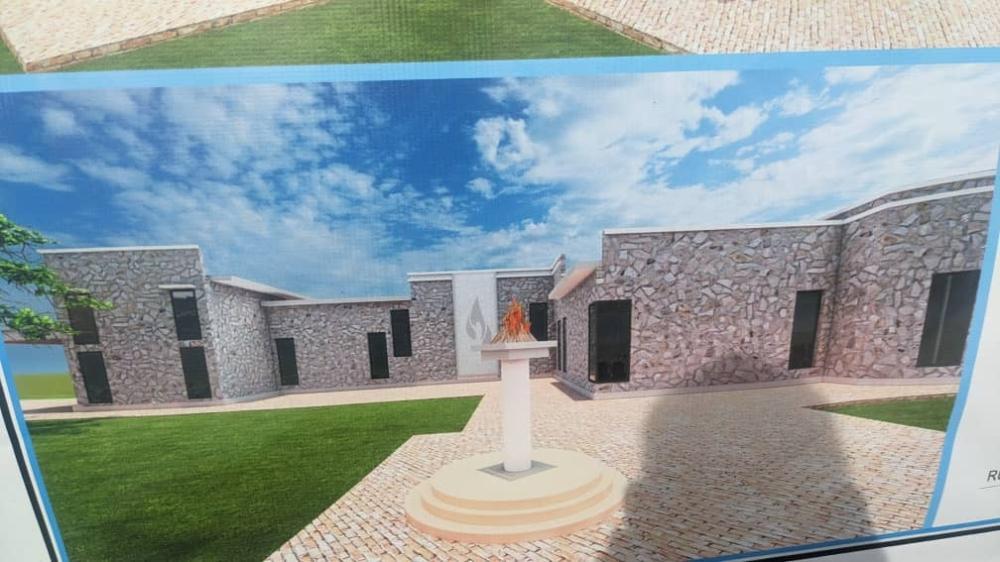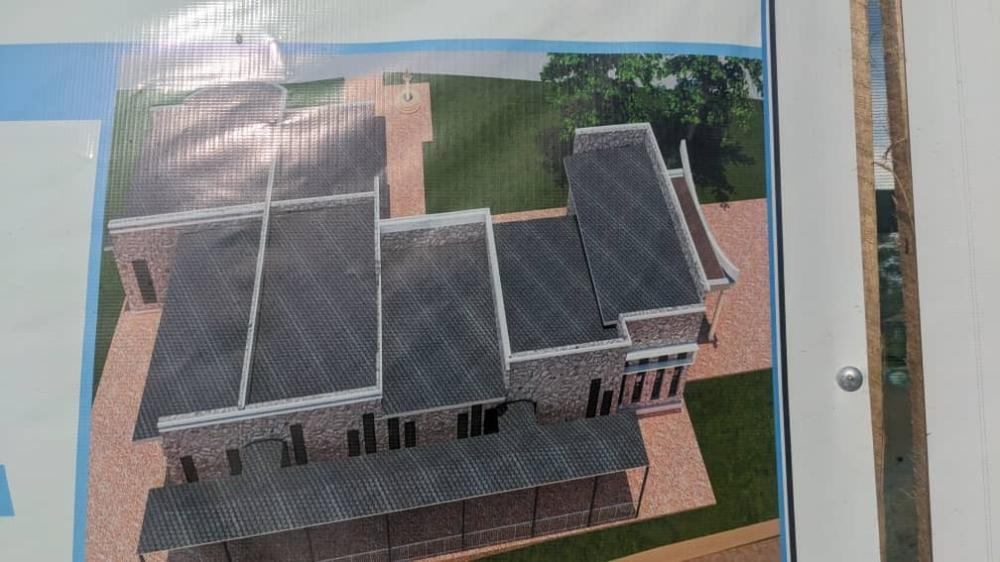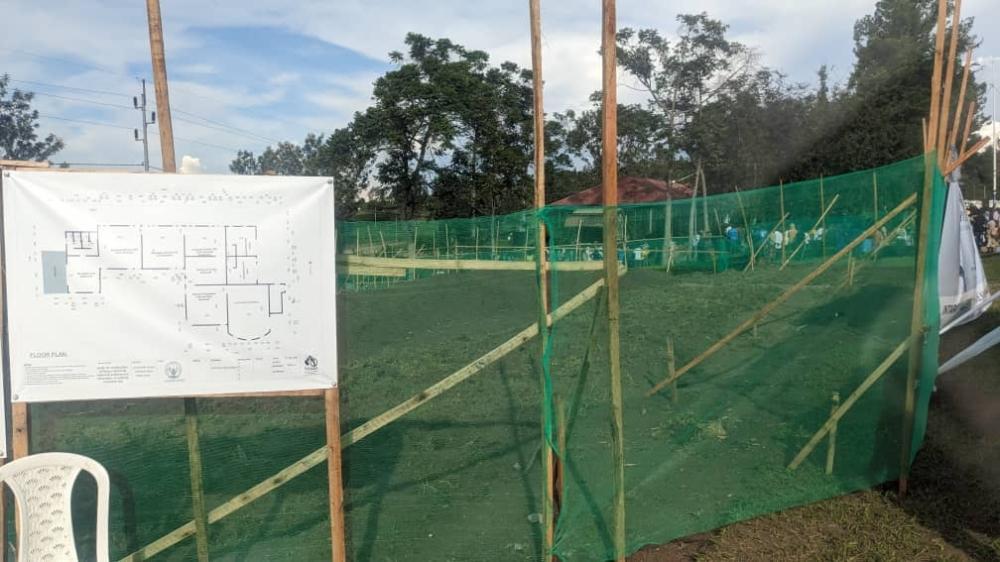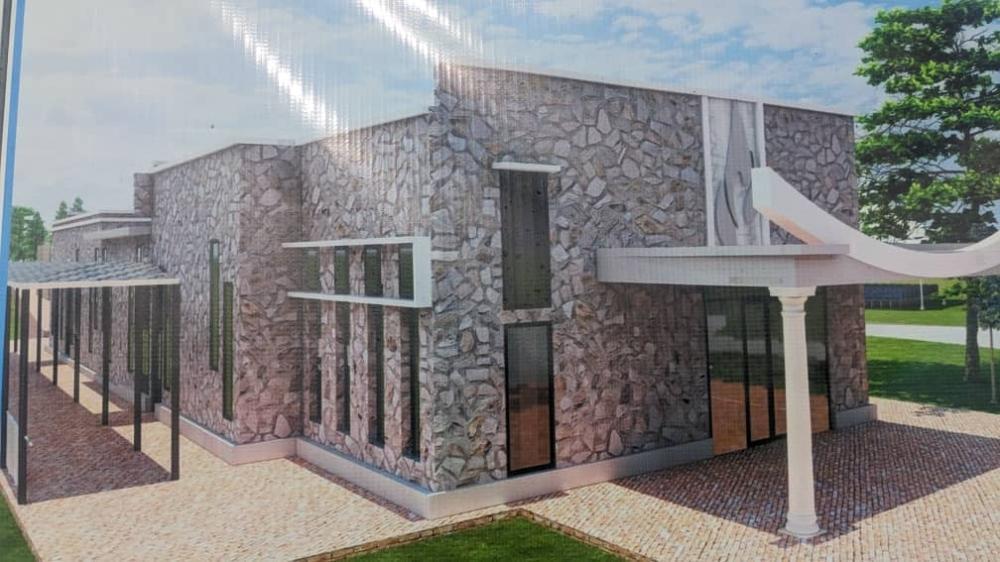Africa-Press – Rwanda. Ruhango District has embarked on building a Genocide Museum expected to be complete by 2026, to preserve the unique tragedy that survivors of the 1994 Genocide against the Tutsi in the former “Commune Ntongwe” endured.
On Sunday, April 20, government officials, families, and friends joined residents at Ruhango District Genocide Memorial to mark the 31st Commemoration of the 1994 Genocide. Wreaths were laid at the resting place of more than 60,000 victims of the genocide who were killed in Ntongwe and surrounding areas.
During the commemoration, 38 bodies were accorded a decent burial at Ruhango Genocide Memorial.
“The museum under construction will have two sections, and its completion will cost close to Rwf470 million. It is a memorial house dedicated to the history of the Genocide against the Tutsi in the Mayaga region. It will serve to explain, in detail, how the Tutsi in what was formerly known as Ntongwe Commune were killed. It will be built with the help of experts using advanced tools to preserve and interpret this history. Once completed, it will be visited regularly, not only during the official commemoration period,” explained Valens Habarurema, the Mayor of Ruhango District.
Ntongwe Commune is also known for its former bourgmestre (mayor), Charles Kagabo, who remains at large ,31 years after orchestrating mass massacres in the area.
Kagabo, believed to have led militiamen who executed thousands within his jurisdiction and surrounding areas—especially in the then Mugina Commune—is described as merciless, cold, calculating, and vicious, in his efforts to exterminate the Tutsi.
Survivors in Kamonyi and neighbouring districts accuse Kagabo and Burundian refugees in the area at the time of being at the forefront of the killings.
The Burundians in question were sheltered at the Nyagahama refugee camp, located in the then Ntongwe Commune. According to genocide survivors, they were stationed there in preparation for the massacres they would eventually commit.
Nyagahama is also where the Burundians were reportedly recruited, paid, provided with transport, and promised other rewards by local leaders in exchange for killing the Tutsi who had gathered in the then Mugina Commune.
“I was 11 years old. Burundian refugees committed acts of cannibalism during the genocide. They killed my relatives. They should face justice and be punished,” said Jeanne Uwambajimana, a genocide survivor.
Sources say Kagabo was a medical worker before he was sent to lead Ntongwe Commune in the lead-up to the genocide.
Born in Ntongwe Commune, he studied nursing at Groupe Scolaire Officiel de Butare Indatwa n’Inkesha and worked at Nyanza Clinic before becoming the head of the commune during the interim government following the murder of bourgmestre Alfred Habumugisha.
In 2008, Kagabo was sentenced to life imprisonment, in absentia, by a Gacaca court.
Genocide survivors from Amayaga in the former Ntongwe Commune and neighbouring villages established Amayaga Genocide Survivors Foundation (AGSF) to document and preserve this history.
Evode Munyurangabo, the President of AGSF, said: “The museum will have a section containing documented evidence of the Genocide in the Mayaga region. It will also feature walls bearing the names of Tutsi victims and include three memorial gardens. We expect it to be completed by October 2026.”
He called for justice against genocide fugitives and especially Burundians who participated in the killings.
Philbert Gakwenzire, the President of Ibuka, an association for genocide survivors, urged young people to engage in research about Rwanda’s history as a way to contribute to preserving evidence about the 1994 Genocide.
He also pledged to produce maps showing the tragic journey of the Tutsi who were hunted during the genocide.
For More News And Analysis About Rwanda Follow Africa-Press









